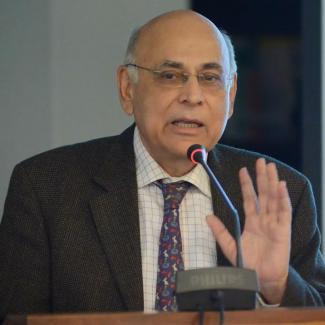Phase II – Research on garments industry in Pakistan
- The textile industry is central to Pakistan’s economy, and ready-made garments manufacturing has the potential to contribute significantly to the country’s objective of creating modern, well-paid jobs, and improving the trade balance.
- Phase II of this project is a result of strong stakeholder demand following the findings of Phase I.
- We found that there has been uneven progress across the areas identified in Phase I for promoting the garment industry.
- Attainment of GSP+ has been the most important factor in sustaining the sector’s growth since 2014.
- Going forward, reforms should focus on customs and trade policies to promote exports
Within the textiles chain, ready-made garments manufacturing is the segment that is the most labour and least energy intensive. It is also the highest value addition segment, and the one best suited to Pakistan’s comparative advantage.
In Phase II of the study on Pakistan’s garments manufacturing, we analysed the impact of changes to the sector. We interviewed some firms from Phase I as well as some additional firms.
In Phase I we identified key areas for the expansion of Pakistan’s garment sector. These included: market access; cluster development; skills; energy; and trade policies and custom procedures. Phase II tracked progress along these dimensions and found it to be uneven.
In terms of market access, attainment of Generalised System of Preferences Plus (GSP+) from the EU was a major step forward that has eased access of garments manufacturers to the EU market. In many ways this has been the most important factor in sustaining growth in Pakistan’s garments industry since 2014. Attainment of GSP+ may be a major attraction to Chinese manufacturers looking to relocate some of their production outside China. This could be further reinforced by planning Special Economic Zones and introducing incentives to Chinese investors under the China-Pakistan Economic Corridor (CPEC).
There has also been progress in cluster development. Quaid-e-Azam Apparel Park is an ambitious initiative and it seems probable that a large part of the project will be operational by 2018. This, together with GSP+ status and incentives under CPEC, could be a game changer not only for the garment industry but possibly for the entire textile chain.
There has been some limited success in skills and energy, but it is likley that more concrete steps will need to be taken in the next 2-3 years. Punjab Skills Development Fund is well positioned to rapidly expand programmes to meet the needs of the garment industry.
While there has not been a substantive improvement in the current energy situation, huge investments are being made in power generation, transmission, and imported liquified natural gas infrastructure. These investments are likely to start having a significant impact by the end of 2017.
There has been little progress in trade policies and custom procedures. The import of raw materials remains heavily regulated. Anti-export bias is compounded by exchange rate policy, which maintains a soft peg with the dollar, resulting in currency appreciation. The government recently announced an incentive package to boost exports. However, this only treats the symptoms and does not address the underlying problems identified in Phase I.
The proposed special economic zones under CPEC may provide a partial solution by providing garment exporters with easy access to raw materials at world prices and a business friendly custom procedures environment. Going forward, policy reforms in this area should be the main focus of efforts (by the government and private sector) to promote Pakistan’s garment industry.




